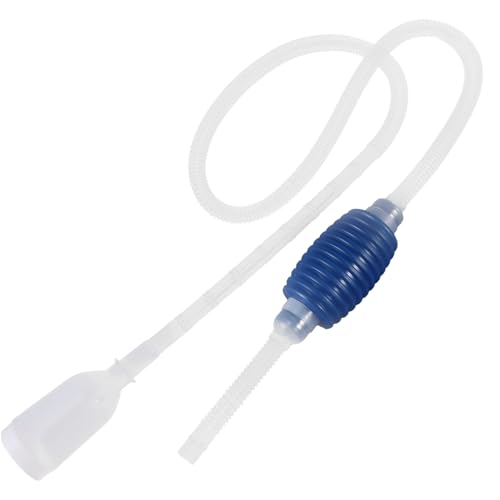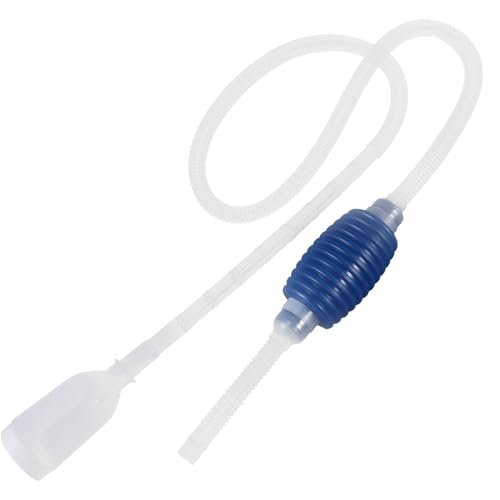Step back in time for a moment and picture the early days of home cleaning. Before electric motors hummed and smart devices whirred, ingenuity reigned supreme. Among the fascinating inventions that emerged were the antique hand pump vacuum cleaner devices. These clever contraptions were the original manual powerhouses, designed to keep homes tidy with nothing more than human effort. While a true antique hand pump vacuum cleaner is now a rare collector’s item, the core concept – using a hand pump for suction and cleaning – remains incredibly relevant in specialized modern tools.
Today, we’re going to explore the fascinating legacy of these manual marvels and bridge it with contemporary hand-pumped solutions. You might not find a direct descendant for your living room carpet, but the spirit of efficient, manual cleaning lives on. We’ll dive into one top-rated product that embodies this principle, offering a fantastic modern take on hand-pumped efficiency for a very specific (and often messy!) task.
The Legacy of Manual Suction: Antique Hand Pump Vacuum Cleaners
The history of vacuum cleaning is far more diverse and hands-on than many realize. Long before Dyson, there were fascinating vintage cleaning equipment pieces that relied entirely on human muscle. Imagine a bulky, often elegant, device that required someone to vigorously pump a lever or handle, creating a manual suction that would draw dust and debris into a collection bag. These early domestic appliances were groundbreaking for their time, offering a step up from brooms and dustpans.
These manual suction cleaners were an impressive feat of engineering for their era. They taught us the fundamental principles of creating a vacuum and using it for hygiene. While they might seem slow by today’s standards, they represented a significant leap in household cleanliness and laid the groundwork for the powerful machines we use today. Collecting an antique hand pump vacuum cleaner is a real treat for enthusiasts of historical technology and those who appreciate the beauty of functional design.
Modern Echoes: Hand Pump Technology Today
While you’re unlikely to find an antique hand pump vacuum cleaner in regular retail stores, the genius of the hand pump principle endures. For many specialized cleaning tasks, a manual pump offers precision, control, and independence from electricity that modern automated systems simply can’t match. From camping showers to drain uncloggers, the simple, reliable hand pump remains an invaluable tool.
Today, this hand-pumped efficiency shines brightly in areas like aquarium maintenance. Keeping a fish tank pristine is crucial for the health of its inhabitants, and manual control is often key to avoiding stress on aquatic life. This brings us to our featured product, a prime example of how hand pump technology has been refined for modern, specialized cleaning needs.
Product Review: Yardwe Aquarium Water Changer Siphon Vacuum Pump Easy…
Yardwe Aquarium Water Changer Siphon Vacuum Pump Easy…

This isn’t your great-grandma’s carpet cleaner, but it’s a modern marvel for aquarium enthusiasts, perfectly demonstrating the lasting utility of hand pump technology. The Yardwe Aquarium Water Changer is a fantastic, straightforward tool designed to make routine fish tank maintenance a breeze. It uses a simple hand pump to create a powerful siphon action, effectively “vacuuming” up debris from your gravel while efficiently changing water. It’s an indispensable gadget for anyone serious about maintaining a clean, healthy aquatic environment.
- Gravel vacuum pump: Specifically designed to remove detritus and debris from aquarium gravel.
- Aquarium vacuum pump: Creates strong suction for effective cleaning and water changes.
- Quick assembly and simple storage: User-friendly design for easy setup and breakdown.
- Hand pump siphon: Manual squeeze pump initiates siphon for dirty water removal and fresh water addition.
- Fish tank hand pump: Easy-to-use cleaner pump, providing excellent control for delicate aquarium environments.
Pros:
– Highly effective for cleaning gravel and performing water changes.
– Simple, intuitive operation with a manual pump, no electricity needed.
– Quick to assemble and easy to store, saving time and space.
– Allows for precise control over suction, protecting fish and plants.
– Durable and practical design for frequent use.
Cons:
– Requires manual effort (pumping) to initiate and maintain siphon.
– Primarily designed for aquarium use, not suitable for other vacuuming tasks.
– Tubing length might be a consideration for very large or deep tanks.
User Impressions:
Customers frequently praise this pump for its sheer effectiveness and ease of use. Many highlight how it transforms a usually messy and time-consuming chore into a quick, straightforward process. The ability to precisely target debris in the gravel without disturbing the fish too much is a consistent point of appreciation. Its simple, robust design means fewer parts to break, making it a reliable staple for many aquarium hobbyists.
Conclusion
From the charmingly intricate mechanisms of the antique hand pump vacuum cleaner that graced homes of yesteryear to the highly specialized, efficient tools like the Yardwe Aquarium Water Changer, the enduring power of manual suction is undeniable. While the grand, carpet-cleaning hand pumps of old are now mostly found in museums or private collections, their core principle lives on, adapted and refined for modern demands.
This journey reminds us that effective cleaning doesn’t always require complex electronics or immense power. Sometimes, the most elegant and practical solutions are those that put control directly into your hands. Whether you’re a history buff admiring a collectible piece of vintage cleaning equipment or a modern aquarist ensuring pristine waters for your finned friends, the hand pump’s legacy of simple, powerful cleaning continues to impress.
When considering cleaning tools, always think about your specific needs. For specialized tasks where precision and manual control are paramount, don’t overlook the simple genius of the hand pump. It’s a testament to timeless design that continues to deliver reliable performance.
FAQ Section
Q1: What is an antique hand pump vacuum cleaner?
A1: An antique hand pump vacuum cleaner is an early form of manual vacuum cleaner that relied on a hand-operated pump or lever mechanism to create suction. This suction would then draw dust and debris into a collection bag or canister, offering a non-electric solution for cleaning carpets and floors before the widespread availability of electric vacuums.
Q2: How did early manual vacuum cleaners work?
A2: Early manual vacuum cleaners typically featured a bellows or piston mechanism connected to a handle. By pushing and pulling this handle, the user would operate the pump, creating a vacuum that would pull air and dirt through a nozzle, usually positioned at floor level. The debris would then be trapped in a cloth bag or container.
Q3: Are antique hand pumps still usable today?
A3: While some antique hand pump vacuum cleaners might still be functional, they are primarily considered collector’s items. Their efficiency is significantly lower than modern electric vacuums, and replacement parts are extremely difficult to find. Most are displayed as historical curiosities rather than for practical cleaning.
Q4: Where can I find collectible antique cleaning tools?
A4: Collectible antique cleaning tools, including rare antique hand pump vacuum cleaners, can often be found at antique shops, estate sales, specialized online antique marketplaces, and historical auctions. Forums and groups dedicated to vintage domestic appliances or historical technology are also good resources.
Q5: What are modern applications of hand pump vacuum technology?
A5: Modern hand pump vacuum technology is utilized in various specialized applications where electricity isn’t available or manual control is preferred. This includes tools like aquarium siphon gravel cleaners, manual drain uncloggers, portable air mattress pumps, some medical suction devices, and even certain types of camping showers or water filters.
Q6: How does an aquarium siphon pump like the Yardwe work?
A6: An aquarium siphon pump typically consists of a long tube, a gravel tube/head, and a hand pump or a bulb. By repeatedly squeezing the hand pump, air is expelled from the tube, creating a lower pressure that initiates a siphon action. Once the siphon starts, water (and debris from the gravel) is continuously drawn out of the aquarium and into a bucket placed below the tank.
Q7: Is the Yardwe pump suitable for general household cleaning?
A7: No, the Yardwe Aquarium Water Changer Siphon Vacuum Pump is specifically designed for aquarium maintenance. Its nozzle size, suction power, and materials are optimized for cleaning gravel and changing water in fish tanks, making it unsuitable and ineffective for general household tasks like vacuuming carpets or cleaning spills on floors.
Q8: What are the benefits of a manual siphon pump over an electric one for aquariums?
A8: Manual siphon pumps offer several benefits for aquarium use, including lower cost, silent operation (important for sensitive fish), no reliance on electricity (useful during power outages or for outdoor tanks), and greater control over suction and flow, allowing for precise spot cleaning without overly disturbing the tank inhabitants.


Leave a Reply